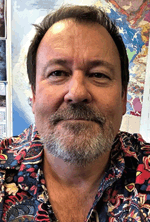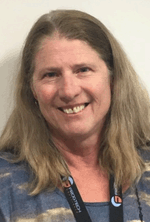Uncovering the Canning Basin: a new comprehensive SEEBASE® model
Karen Connors A C , Cedric Jorand A , Peter Haines B , Yijie Zhan B and Lynn Pryer AA Frogtech Geoscience, PO Box 250, Deakin West, ACT 2600, Australia.
B Geological Survey of Western Australia, Mineral House, 100 Plain Street, East Perth, WA 6004, Australia.
C Corresponding author. Email: kconnors@frogtech.com.au
The APPEA Journal 58(2) 793-798 https://doi.org/10.1071/AJ17073
Accepted: 8 March 2018 Published: 28 May 2018
Abstract
A new regional scale SEEBASE® model has been produced for the intracratonic Canning Basin, located in the north of Western Australia. The 2017 Canning Basin SEEBASE model is more than an order of magnitude higher resolution than the 2005 OZ SEEBASE version — the average resolution is ~1 : 1 M scale with higher resolution in areas of shallow basement with 2D seismic coverage — such as the Broome Platform and Barbwire Terrace. Post-2005 acquisition of potential field, seismic and well data in the Canning Basin by the Geological Survey of Western Australia (GSWA), Geoscience Australia and industry provided an excellent opportunity to upgrade the SEEBASE depth-to-basement model in 2017.
The SEEBASE methodology focuses on a regional understanding of basement, using potential field data to interpret basement terranes, depth-to-basement (SEEBASE), regional structural geology and basement composition. The project involved extensive potential field processing and enhancement and compilation of a wide range of datasets. Integrated interpretation of the potential field data with seismic and well analysis has proven quite powerful and illustrates the strong basement control on the extent and location of basin elements. The project has reassessed the structural evolution of the basin, identified and mapped major structures and produced fault-event maps for key tectonic events. In addition, interpretative maps of basement terranes, depth-to-Moho, basement thickness, basement composition and total sediment thickness have been used to calculate a basin-wide map of basement-derived heat flow.
The 2017 Canning Basin SEEBASE is the first public update of the widely used 2005 OZ SEEBASE. All the data and interpretations are available from the GSWA as a report and integrated ArcGIS project, which together provide an excellent summary of the key features within the Canning Basin that will aid hydrocarbon and mineral explorers in the region.
Keywords: basement, basement composition, depth-to-basement, heat flow, Moho, structure, tectonic events, terranes.

Karen Connors is a Managing Principal Geoscientist with Frogtech Geoscience, where she oversees the development of SEEBASE products and leads client projects. Karen holds a BSc (1986) from Dalhousie University, Canada, and a PhD from Monash University, Australia (1992). She completed a Postdoctoral Fellowship at the Geological Survey of Canada. Karen has ~30 years’ experience as a geologist including time as a researcher, as an employee in both the minerals and petroleum industries and as a consultant. Over the last 12+ years, she has focused on integrated interpretation of potential field datasets with seismic and other data to assess the basement control on basin evolution and implications for the petroleum prospectivity in regions around the globe. Karen is a member of Petroleum Exploration Society of Australia and a Fellow of the Geological Society of London and the Institute of Managers and Leaders. |

Cedric Jorand is an expert in geomechanics and thermal modelling with over 16 years’ experience in advising the oil and gas sector on exploration risk reduction through the understanding of natural fracture development in sedimentary basins and an integrated approach to basement heat flow prediction. Cedric received a BSc in Geology and a Masters in Earth Sciences from the University of Nice Sophia Antipolis where he received a Doctorate of Geomechanics and Earth Sciences co-funded by Total and Shell in 2007. From 2007 to 2008, Cedric held a Research Fellow position at the French Geological Survey (BRGM) authoring public reports on the characterisation of fractures and faults in the deep boreholes of the experimental Soultz-Sous-Forets enhanced geothermal system. Cedric began his career with Frogtech Geoscience in 2008 as a Basin Modeller working on petroleum prospectively assessment in Paleozoic to Mesozoic basins worldwide. He is now a Principal Thermal Modeller and manager of Research and Design activities. |

Peter Haines has been with the GSWA for 14 years where he is currently Senior Petroleum Geologist with the Basins and Energy Geoscience team. Since joining GSWA he has worked on the geology and petroleum prospectively of Neoproterozoic and Paleozoic basins, including the Canning Basin, throughout Western Australia. Peter holds BSc (Hons, 1982) and PhD (1987) degrees in Geology from the University of Adelaide. He has previously worked for the Northern Territory Geological Survey, University of South Australia and the University of Tasmania where he lectured in sedimentology. Peter is a member of PESA and the Geological Society of Australia. |

Yijie Zhan is a senior geophysicist at the GSWA’s Basin and Energy Geoscience group since 2011. He graduated from China University of Geoscience (Beijing) with a BSc in 2005. He was first employed by PetroChina’s Daqing Research Institute before moving to Land Ocean Energy Services in 2010. Apart from structural interpretation, Yijie has interests in fractured reservoir, seismic inversion and reservoir modelling, and has published on azimuthal anisotropy, forward modelling and characterisation of gas-bearing volcanoclastic reservoirs. He is a member of PESA. |

Lynn Pryer is a Principal Structural Geologist and Head of Consulting Services at Frogtech Geoscience, where she has worked for the past 20 years consulting to industry while developing the trademark SEEBASE® workflow and product line. She has designed and managed projects with petroleum companies, mining companies and governments. The comprehensive workflow developed at Frogtech Geoscience is applicable to all geological systems and investigations and is especially useful for predicting tectonic controls on basin evolution. Lynn holds a BSc and MSc from McMaster University (Canada, 1984, 1986), a PhD from the University of Toronto (Canada, 1993) and completed a Postdoctoral Fellowship at the Research School of Earth Sciences at the Australian National University. She worked for the Geological Survey of Canada and the Ontario Geological Survey (Minerals Division) before moving to Australia. Lynn is a member of GSAus, GSAm, AGU, PESA, ASEG and a GSL Fellow. |
References
Braun, J., McQueen, H., and Etheridge, M. (1991). A fresh look at the late Palaeozoic tectonic history of western-central Australia. Exploration Geophysics 22, 49–54.| A fresh look at the late Palaeozoic tectonic history of western-central Australia.Crossref | GoogleScholarGoogle Scholar |
Frogtech (2005). OZ SEEBASE™ Study 2005. Public Domain. Report to Shell Development Australia by FrOG Tech Pty Ltd.
Frogtech (2006). OZ SEEBASE™ Proterozoic Basins Study. Report to Geoscience Australia by FrOG Tech Pty Ltd.
Ghori K. (2013). Petroleum Geochemistry and Petroleum Systems Modelling of the Canning Basin, Western Australia, Report 124. Geological Survey of Western Australia.
GSWA [Geological Survey of Western Australia]. (2016). 1:500 000 State interpreted bedrock geology of Western Australia, 2016. Geological Survey of Western Australia, digital data layer. Available at: http://www.dmp.wa.gov.au/geoview [verified 29 march 2018].
Kennett, B., Salmon, M., and Saygin, E. (2011). AusMoho: the variation of Moho depth in Australia. Geophysical Journal International 187, 946–958.
| AusMoho: the variation of Moho depth in Australia.Crossref | GoogleScholarGoogle Scholar |
Kennett, B., Fichtner, A., Fishwick, S., and Yoshizawa, K. (2013). Australian Seismological Reference Model (AuSREM): mantle component Geophysical Journal International 192, 871–887.
| Australian Seismological Reference Model (AuSREM): mantle componentCrossref | GoogleScholarGoogle Scholar |
Maidment, D., and Zhan, A. (2016). Canning Coastal Seismic Survey Preliminary Basement Interpretation. Geological Survey of Western Australia Open Day Poster.
Parra-Garcia M., Sanchez G., Denitith M.C. and George A.D. (2014). Regional Structural and Stratigraphic Study of the Canning Basin, Western Australia, Report 140. Geological Survey of Western Australia.
Salmon, M., Kennett, B., Stern, T., and Aitken, A. (2012). The Moho in Australia and New Zealand. Tectonophysics 609, 288–298.
| The Moho in Australia and New Zealand.Crossref | GoogleScholarGoogle Scholar |
Salmon, M., Kennett, B., and Saygin, E. (2013). Australian Seismological Reference Model (AuSREM): crustal component Geophysical Journal International 192, 190–206.
| Australian Seismological Reference Model (AuSREM): crustal componentCrossref | GoogleScholarGoogle Scholar |


